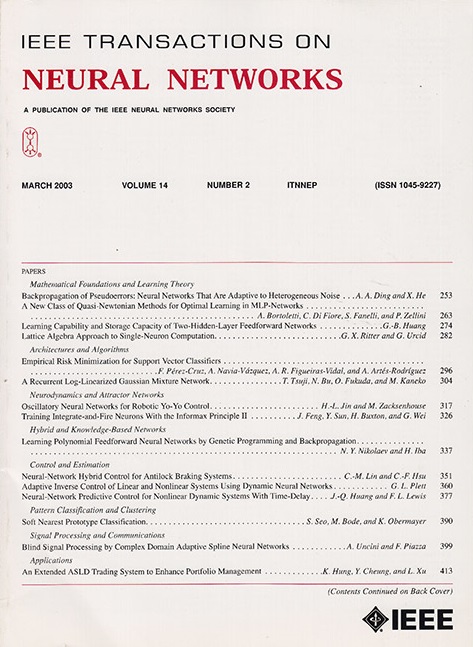具有实例重加权对齐和实例维数均匀性的视觉强化学习控制
IF 8.9
1区 计算机科学
Q1 COMPUTER SCIENCE, ARTIFICIAL INTELLIGENCE
IEEE transactions on neural networks and learning systems
Pub Date : 2025-04-17
DOI:10.1109/TNNLS.2025.3556838
引用次数: 0
摘要
视觉强化学习(VRL)在直接从复杂的高维视觉输入中学习行为方面表现出了显著的能力。尽管取得了这些进步,但现有的VRL方法仍然遇到完全崩溃和维度崩溃等障碍,导致表示退化和维度冗余。对比学习,虽然有助于缓解完全崩溃的问题,但容易产生类冲突困境。为了解决上述问题,本文提出了一种基于实例重加权对齐和实例维均匀性(IAIU)的VRL控制方法。在该VRL控制方法中,通过最小化预测下一状态表示的分布与其加权的实际对应分布之间的Kullback-Leibler (KL)散度,引入实例重加权对齐表示学习。通过这样做,我们的目标是在相同的语义类中对齐状态表示,从而有效地减轻类冲突。同时,采用实例维均匀正则化机制抑制崩溃现象。这是通过分别在实例和维度级别上利用Hilbert-Schmidt独立性标准(HSIC)和标准正交约束来实现的,从而确保提取与任务相关的状态表示。从本质上讲,IAIU的一致性和一致性的双重策略不仅解决了类冲突的关键问题,而且保证了实例和维度的一致性。分散控制套件(DCS)基准的仿真结果证明了IAIU的卓越性能,在表示能力和策略有效性方面都有实质性的增强。代码可在https://github.com/anonymousforcode/IAIU上获得本文章由计算机程序翻译,如有差异,请以英文原文为准。
Visual Reinforcement Learning Control With Instance-Reweighted Alignment and Instance-Dimension Uniformity
Visual reinforcement learning (VRL) has demonstrated remarkable capabilities in learning behaviors directly from intricate high-dimensional visual inputs. Despite these advancements, existing VRL methods still encounter obstacles such as complete collapse and dimensional collapse, resulting in representation degradation and dimensional redundancy. Contrastive learning, while helping to mitigate the complete collapse issue, is prone to the class collision dilemma. To tackle the aforementioned challenges, this article proposes a novel VRL control method with instance-reweighted alignment and instance-dimension uniformity (IAIU). In this VRL control method, the instance-reweighted alignment representation learning is introduced by minimizing the Kullback–Leibler (KL) divergence between the distributions of predicted next state representations and their weighted actual counterparts. By doing so, we aim to align state representations within the same semantic class, thereby effectively alleviating class collision. Meanwhile, an instance-dimension uniformity regularization mechanism is adopted to suppress the collapse phenomenon. This is realized by leveraging the Hilbert–Schmidt independence criterion (HSIC) and standard orthogonal constraint at the instance and dimension levels, respectively, ensuring the extraction of task-relevant state representations. In essence, IAIU’s dual-strategy of alignment and uniformity not only addresses the critical issue of class collision but also guarantees uniformity with respect to both the instances and dimensions. Simulation results from the distracting control suite (DCS) benchmark demonstrate IAIU’s superior performance, with substantial enhancements in both representational ability and policy efficacy. The code is available at https://github.com/anonymousforcode/IAIU
求助全文
通过发布文献求助,成功后即可免费获取论文全文。
去求助
来源期刊

IEEE transactions on neural networks and learning systems
COMPUTER SCIENCE, ARTIFICIAL INTELLIGENCE-COMPUTER SCIENCE, HARDWARE & ARCHITECTURE
CiteScore
23.80
自引率
9.60%
发文量
2102
审稿时长
3-8 weeks
期刊介绍:
The focus of IEEE Transactions on Neural Networks and Learning Systems is to present scholarly articles discussing the theory, design, and applications of neural networks as well as other learning systems. The journal primarily highlights technical and scientific research in this domain.
 求助内容:
求助内容: 应助结果提醒方式:
应助结果提醒方式:


